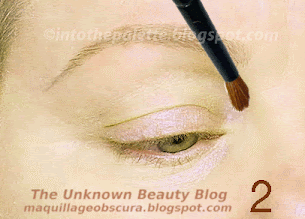By now you know I am fascinated with the illusion of makeup, not the special fx but the beauty aspect of it. Well, I am also fascinated by the hair. I like to analyze and see how a cut shapes and flows on the head. I guess you could say I just like how a human can transform themselves just by a simple action of applying makeup and cutting hair.
The skull houses and protects the brain. (At this moment, my brain cells are just a bit in overload and to dump all this information out is relaxing!) For me, I like to see how the hair sits and shapes it.
First, let’s understand the parts of the skull. This is all just basic.
- Occipital Bone - The bump in the back. This gives that bump volume. Remember, the famous Dorothy Hamill haircut? The layers in this area created that carefree cut!
- Parietal Bone - The top back of the head. Hair falls back and also swings to the front.
- Temporal Bone - The side of the head. Hair here is probably one of the most important, more so than the back. (Just my opinion.)
- Frontal Bone - This meets your forehead. Your fringe or bangs is from this area.
Parts of the Skull
Parting the Hair
Like Moses who parted the Red Sea, parting the hair for a clear view of what is beyond is very helpful! With no commandments in my hand but just a leap of faith (okay, and lots of analyzing), parting the hair has its marked territory.
If you ever have time, take pictures of your head from different angles. This will help you understand how the hair flows.
Dividing the front and the back is important. This is the initial step to the shape of a haircut, yet it shouldn’t be dependent on this division since hair flows. Usually, there is a point where the back starts. I see it as right behind the ear where the hairline will meet the curve of the hairline above the ear.
Next, divide the top of the hair and the bottom half of the hair. Usually, the top part is dictated by how the hair falls. This varies from person to person, the width of the parting is usually just before the curve when the top will hit the side or temporal bone. The bottom half is dictated by the bump or the occipital bone.
For me, the next parting is important because it determines the overall length of the hair. Divide the parting that sits right above your ear. This will divide the side and top from the side front and top front. This side parting above the ear is what I consider to be the constant and the rest of the hair are variables. (More will be explained in a future post.)
Last but not least, divide the area below the occipital bone. Divide the hair from the area that is the nape of your neck. Depending on the cut, the area above the nape is what really give the volume and for some cuts, the actual length. (More on that later!)
Here are diagrams of the partings and some added sub-partings from different angles.
I apologize for the bad drawings. If anyone is able to draw these heads any better and willing to donate some drawings, I will greatly appreciate it. Absolute credit and good karma will be mentioned.
I know this isn’t some “WOW” post, but I just thought it would be interesting for you all to see how my brain works. Thanks for allowing me to empty a bit of it!
Next post, how hair flows.
*Disclosure: I don't claim to be some great hair guru. I just like to explain difficult beauty stuff.*





















